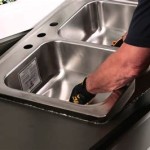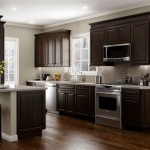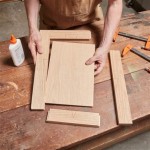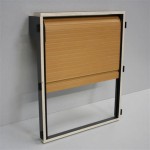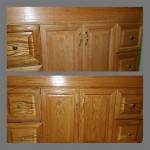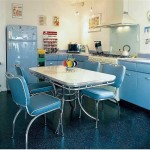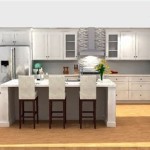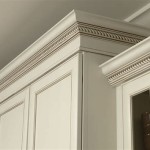Do You Have To Prime Kitchen Cabinets Before Painting Them White?
Painting kitchen cabinets white is a popular choice for homeowners seeking a brighter, cleaner, and more modern aesthetic. However, achieving a flawless, durable finish on kitchen cabinets requires careful preparation and execution. A common question arises during the planning phase: is priming necessary before applying white paint? The answer, while not always a definitive "yes," leans heavily towards recommending priming as a critical step for optimal results. This article will delve into the reasons why priming is often essential, the potential consequences of skipping this step, and factors to consider when making the decision for a specific kitchen cabinet painting project.
Priming kitchen cabinets involves applying a specialized coating designed to prepare the surface for paint. This primer layer serves several crucial functions, including improving paint adhesion, blocking stains and tannins, creating a uniform surface, and enhancing the overall appearance of the final paint job. While some paints are marketed as "paint and primer in one," these products often fall short of providing the same level of performance as a dedicated primer, especially when dealing with demanding surfaces like kitchen cabinets.
The Importance of Adhesion
One of the primary benefits of priming is that it enhances the adhesion of the paint to the cabinet surface. Kitchen cabinets are often constructed from a variety of materials, including wood, laminate, and thermofoil. These materials can have varying degrees of porosity and surface texture, which can affect how well the paint adheres. A primer creates a consistent and slightly textured surface that allows the paint to grip effectively. Without primer, the paint may peel, chip, or scratch easily, leading to premature wear and tear and a less-than-desirable finish. This is particularly important in the high-traffic and high-humidity environment of a kitchen, where cabinets are subjected to frequent use and exposure to moisture and grease.
The surface of existing cabinets might also have contaminants like grease, grime, or cleaning product residue that can interfere with paint adhesion. Even after thorough cleaning, these residues can sometimes persist, creating a barrier between the cabinet surface and the paint. Primer acts as a sealant, encapsulating these contaminants and providing a clean, stable surface for the paint to bond to. Selecting a primer specifically formulated for adhesion can further improve the bond between the cabinet and the new paint layer.
Furthermore, previously painted or finished cabinets can present challenges for adhesion. The existing paint or finish may be glossy or slick, preventing the new paint from properly adhering. Sanding the surface can help create a better grip, but it may not be sufficient on its own. Primer fills in any imperfections left by sanding and creates a uniform surface that is ideal for paint adhesion. This is especially crucial when switching from a darker paint color to white, as the primer helps to block the underlying color and prevent it from bleeding through.
Blocking Stains and Tannins
Another critical role of primer is to block stains and tannins from bleeding through the paint. Wood cabinets, especially those made from cherry, oak, or mahogany, contain tannins, which are natural compounds that can leach out over time and discolor the paint. This is particularly noticeable when painting with light colors like white, as even a slight discoloration can significantly detract from the overall appearance. Similarly, water stains, grease stains, or marker marks can also bleed through the paint, creating unsightly blemishes.
Primers formulated with stain-blocking properties create a barrier that prevents these stains and tannins from migrating to the surface of the paint. These primers typically contain ingredients like shellac or oil-based resins that effectively seal the wood and prevent discoloration. Using a high-quality stain-blocking primer is essential for achieving a clean, uniform white finish on wood cabinets. Without proper priming, the stains and tannins may reappear even after multiple coats of paint, resulting in a frustrating and time-consuming process.
The type of wood used to construct the cabinets plays a significant role in determining the need for a stain-blocking primer. Wood species with high tannin content, such as redwood and cedar, are particularly prone to bleeding. Even if the cabinets are not made entirely of these woods, veneer or trim made from these materials can still cause discoloration. Therefore, it is crucial to identify the type of wood and assess its potential for staining before proceeding with painting.
Creating a Uniform Surface for Optimal Appearance
Primer contributes significantly to achieving a uniform and professional-looking paint finish. Kitchen cabinets often have variations in surface texture and color, which can affect how the paint appears. For example, patched areas, wood grain patterns, or differences in sheen from previous finishes can create an uneven appearance if the paint is applied directly. Primer evens out these imperfections, creating a smooth and consistent surface that allows the paint to cover evenly and reflect light uniformly.
Primer also helps to hide minor imperfections such as small scratches, dents, and hairline cracks. While primer will not fill deep gouges or holes, it can effectively minimize the appearance of minor surface flaws, resulting in a smoother and more refined finish. This is particularly important for older cabinets that may have accumulated wear and tear over time. By creating a uniform surface, primer ensures that the paint color and sheen are consistent across the entire cabinet, enhancing the overall aesthetic appeal.
When painting cabinets white, achieving a consistent color is paramount. White paint can be particularly unforgiving, highlighting any variations in the underlying surface. Primer provides a neutral base that ensures the white paint adheres uniformly and reflects light evenly, minimizing the risk of blotchiness or uneven coverage. This is especially important when using multiple cans of paint, as slight variations in color between batches can be amplified if the surface is not properly primed.
Considering Cabinet Material and Existing Finish
The material and existing finish of the kitchen cabinets significantly influence the necessity of priming. Solid wood cabinets, as previously mentioned, often require priming to block tannins and ensure proper adhesion. Laminate or thermofoil cabinets, on the other hand, present different challenges. These materials have a smooth, non-porous surface that paint struggles to adhere to. In these cases, specialized primers designed for slick surfaces are crucial. These primers contain bonding agents that create a strong connection between the cabinet surface and the paint.
Cabinets that have already been painted or finished require careful assessment. If the existing finish is in good condition and compatible with the new paint, light sanding and cleaning may be sufficient. However, if the existing finish is peeling, chipping, or incompatible with the new paint, priming is essential. Removing the old finish entirely and applying a fresh coat of primer ensures a stable and uniform surface for the new paint to adhere to. When dealing with unknown finishes, it is always best to err on the side of caution and apply primer to ensure optimal results.
The color of the existing finish also plays a role in determining the need for priming. When painting cabinets a lighter color, especially white, it is often necessary to prime even if the existing finish is in good condition. This is because the underlying color can bleed through the new paint, affecting the final color and requiring multiple coats for full coverage. Primer helps to block the underlying color and create a neutral base for the white paint, ensuring a clean and accurate finish.
Choosing the Right Primer
Selecting the appropriate primer is just as important as deciding whether to prime at all. Different types of primers are formulated for specific purposes, and choosing the wrong primer can compromise the quality of the paint job. Oil-based primers are excellent for blocking stains and tannins, but they can be more difficult to work with and require mineral spirits for cleanup. Latex primers are easier to apply and clean up with water, but they may not be as effective at blocking stains or adhering to slick surfaces.
Specialty primers are available for specific applications, such as bonding primers for laminate or thermofoil cabinets, and self-etching primers for metal cabinets. These primers contain specialized ingredients that promote adhesion to difficult surfaces. It is essential to read the product labels carefully and choose a primer that is specifically designed for the type of cabinet material and existing finish. Consulting with a paint professional can also help to ensure that the correct primer is selected for the job.
Tinting the primer can also be beneficial, especially when painting cabinets a light color. Tinting the primer to a shade similar to the topcoat can help to improve coverage and reduce the number of coats of paint required. This is particularly useful when painting white cabinets, as white primer can sometimes appear translucent and allow the underlying color to show through. Tinting the primer to a light gray or off-white color can help to create a more opaque base for the white paint.

The Best Way To Paint Kitchen Cabinets No Sanding Palette Muse

Painted White Cabinets Before And After Reveal Photos Renovated Faith

How To Prep And Paint Kitchen Cabinets Lowe S

Painted White Cabinets Before And After Reveal Photos Renovated Faith

The Best Way To Paint Kitchen Cabinets No Sanding Palette Muse

Painted White Cabinets Before And After Reveal Photos Renovated Faith

Best Kitchen Cabinet Paint Finish For Professional Results Pennies A Fortune

Diy Painting Your Kitchen Cabinets The Right Way

Painted White Cabinets Before And After Reveal Photos Renovated Faith

How To Paint Laminate Kitchen Cabinets Perfect Finish Tips
Related Posts

